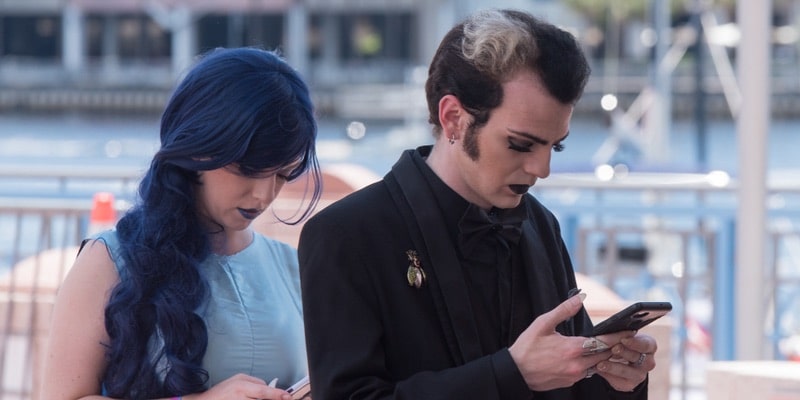We explain what the emo subculture is and what its origin is. Also, what are the characteristics of its members and what their clothing is like.

What are emo?
Emo are members of a subculture and urban tribe that emerged in the 1980s mainly in the United States, around certain subgenres of rock music (hardcore punk, mostly, but later known as emo-core) already a melancholic, dark aesthetic, openly rejecting traditional religious values and the commercial system.
The term “emo”, with which they are identified, comes from the English word emotional (“emotional”), initially used to name the genre of rock music cultivated by bands like Rites of Spring. His style was characterized by being hardcorethat is, by a very intense handling of the instruments, but at the same time lyrics that had to do with the feelings and inner world of people. From there came the idea that emo people are highly sensitive people, who continually express their emotions and, consequently, live life depressed, regretting.
The emo subculture had its moment of greatest prominence in the 2000s and as often happens in the countercultural sphere, they have largely lost their initial irreverent character to become a style of clothing. Currently they are considered a minority and retreating urban tribe.
See also: Hipster
Characteristics of an emo

The members of the emo subculture can be characterized by the following:
- melancholic posture towards life prone to introversion and complaining.
- Open rebellion against the consumer society and rejection of traditional moral values, especially those associated with religion and the Church.
- Defense of gender equality and open homosexuality as well as a more sensitive masculinity.
- Ideological similarities with the punk movement of the late 20th century, but often expressed through a defeatist attitude, similar to the rabid sadness of the grunge.
- dark clothing exotic hairstyles, piercings and tattoos. They are often labeled “Gothic”.
- Musical preferences that tend towards emo-core post-rock, post-punk, metalcore, deathcorebut also indie rock, pop-rock, rock alternative and rock Gothic.
Origin of the emo subculture
It is often considered the point of origin of the emo subculture the appearance in 1985 of the album “Rites of Spring” by the band of the same name whose style marked its own trend in punk music at the time, which is why it was later classified as a post-punk style: post-hardcore. This style, however, was soon renamed “emo-core,” to refer to his highly sentimental lyrics, and from there the term gained popularity as a position on life.
However, The emo subculture did not become popular until the early 2000s as an heir to the styles and postures of punk, gothic, grunge, skateboard and rockabilly. In fact, his style can be defined as a mixture of elements from all these aspects of the late 20th century.
From then on, its massification and adoption as a fashion became more evident. Some of his references in the music of this time were the American singers Avril Lavigne and Taylor Swift, as well as the musical band My Chemical Romance.
emo clothing

The appearance of emo is possibly their most obvious feature, and is characterized by:
- Dark clothing, preferably black purple, red, with a more or less challenging style, which oscillates between skate (baggy pants, hoodie) and grunge (tucked pants, short-sleeved t-shirts over long sleeves), and even punk (torn or tampered clothing). ). The use of wide belts stands out.
- More or less lush hairstyles with a marked tendency to cover part of the face with long, straight bangs.
- Prevalence of piercings and tattoos black glasses, bracelets and often dark makeup around the eyes, in both women and men.
- Intentionally androgynous appearance hiding obvious physical features and projecting fragility.
Continue with: Poser
References
- “Emo (subculture)” on Wikipedia.
- “Emo Culture: learn its history and meaning” in the newspaper Los Andes (Argentina).
- “Emos (urban tribe): history, characteristics and ideology” in Warble Council.





